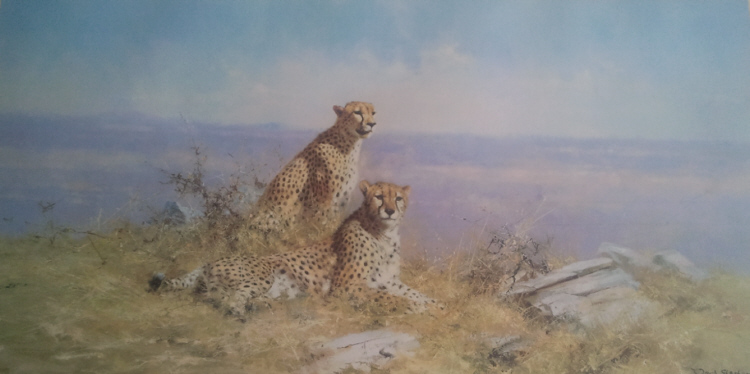Serengeti
David Shepherd

"Serengeti"
Signed Limited Edition of 850
Stamped by the Fine Art Trade Guild
Date of publication 1985
Image Size 16" x 31"
Always regarded as a superb example of David Shepherd's work, and highly collectible.

For eons, Serengeti was sparsely inhabited as species of African wildlife have roamed freely across the vast rolling plains.
However, this had all changed when nomadic pastoralists of the Maasai began to migrate to the area in the early 20th century.
They were hurt by drought and disease. Thousands died in the 1880s from a cholera epidemic and in 1892 from smallpox.
Rinderpest (a bovine viral disease) then wiped out the cattle which were their possessions.
The Tanzanian government later in the 20th century re-settled the Maasai around the Ngorongoro Crater.
Poaching, and the absence of fires (which had been caused by humans, allowed dense woodlands and thickets to develop over the next 30 to 50 years.
Tsetse fly populations now prevented any significant human settlement in the area.
By the mid-1970s, wildebeest and Cape buffalo populations had recovered and were increasingly cropping the grass, reducing the amount of fuel available for fires.
The reduced intensity of fires has allowed acacia to once again become established.